Hooked on Sharks: Belize Tags Along for Conservation
Sharks often get a bad rap thanks to those teeth and Hollywood thrillers, but here in Belize, they’re playing a much bigger role. These ocean giants are helping scientists unlock secrets about marine life, and local fishers are right there with them, diving into a new kind of work that’s all about conservation. Tonight, we will take you twenty-eight miles off the coast of Riversdale, Stann Creek District, to Glover’s Reef, where a passionate team is tagging sharks, tracking their movements, and helping protect the delicate balance of our underwater world. In collaboration with the Belize Fund for a Sustainable Future, News Five brings you the story of one family’s dedication to shark research and conservation. Here’s News Director Isani Cayetano.
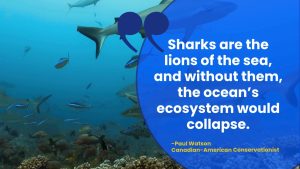 “Sharks are the lions of the sea, and without them, the ocean’s ecosystem would collapse.” – Paul Watson, Canadian-American Conservationist
“Sharks are the lions of the sea, and without them, the ocean’s ecosystem would collapse.” – Paul Watson, Canadian-American Conservationist
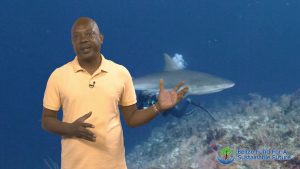 Isani Cayetano, Reporting
Isani Cayetano, Reporting
When you think of sharks, you probably picture fierce predators, but did you know they play a vital role in keeping our oceans healthy? Sharks are at the top of the marine food chain, and that makes them crucial caretakers of the sea. They help control the populations of other marine animals, which keep things in balance. For example, by keeping prey numbers in check, sharks prevent overgrazing of seagrass beds and coral reefs, two habitats that are essential for ocean life.
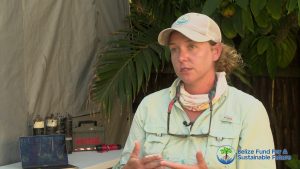
Jessica Quinlan
Jessica Quinlan, Exec. Dir., Fishers for Science
“They are most often thought of as a top predator, but they fulfill different roles, you know, they are top and meso-predators. And so, that means that they help to maintain populations of other fish, if they are prey, and what that does is help keep things in balance. So, sharks will eat their prey in certain numbers, so that their prey doesn’t become overabundant and then, you know, decimate what their prey eats…and then we get this collapse and this imbalance of things.”
Did you know Belize is a shark hotspot? With over forty different species swimming in our waters, it’s no wonder marine biologists are so fascinated by our coastline. From vibrant coral reefs to lush seagrass beds and winding mangrove forests, Belize’s diverse marine habitats offer the perfect home for these incredible creatures.
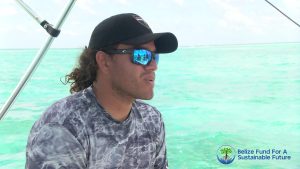
Hector Martinez
Hector Martinez, Vice Chair, Belize Shark Fishers Association
“Sharks are important for many reasons. They’re important to the marine ecosystem to balance the food chain. If they’re a sick fish on the reef, they can clean up that fish. They’re sort of like the garbage truck of the ocean, especially the tiger shark.”
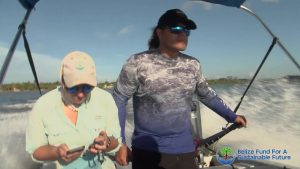 We’re heading out to sea, twenty-eight miles off the coast of Riversdale in the Stann Creek District, where a small but passionate team is diving into shark research. Hector Martinez and Jessica Quinlan are leading the charge on this expedition to Glover’s Reef, a stunning, partially submerged atoll that marks the edge of the Belize Barrier Reef. It’s a chain of islands, twenty miles long and seven-and-a-half miles wide, teeming with marine life. Joining them are three young seafarers, all family, and all second-generation fisherfolk, bringing their deep-rooted knowledge of the sea to the mission. Together, they’re helping scientists track the migration patterns of sharks in Belize’s southern waters.
We’re heading out to sea, twenty-eight miles off the coast of Riversdale in the Stann Creek District, where a small but passionate team is diving into shark research. Hector Martinez and Jessica Quinlan are leading the charge on this expedition to Glover’s Reef, a stunning, partially submerged atoll that marks the edge of the Belize Barrier Reef. It’s a chain of islands, twenty miles long and seven-and-a-half miles wide, teeming with marine life. Joining them are three young seafarers, all family, and all second-generation fisherfolk, bringing their deep-rooted knowledge of the sea to the mission. Together, they’re helping scientists track the migration patterns of sharks in Belize’s southern waters.
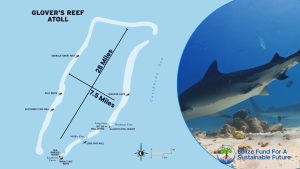 Hector Martinez
Hector Martinez
“With the Belize Fund, the work we’ve been doing is setting down Baited Remote Underwater Video Stations. They’re called BRUVS and the idea behind that, what we do with that data is they can monitor the shark abundance in Belize. So, the bigger part of that is part of Fin Print and they’re sampling in fifty-two different countries, I think it is. There’s probably ten years of BRUVS footage for Glover’s Reef and so, over the ten years, they can monitor when the sharks went up, when they went down or when they’re staying at a normal amount.”
Today, the team is taking a plunge and will descend to a depth of about seventy feet. They gear up, double-check their diving equipment and slip into the azure waters of the Caribbean Sea. Each diver is given a receiver and, after bobbing on the surface for a few minutes, they begin their descent. Beneath the surface, they will replace the Baited Underwater Video Stations that have been submerged for nearly a year.
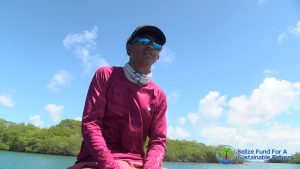
Anderson Martinez
Anderson Martinez, Fisherman
“The BRUVs, you know, we set an underwater camera for two hours, no, for one hour and thirty minutes, you know, they get set and we see sharks, all kinds of sharks. We see hammerhead, we see reef sharks, and all types of fish. So that’s a very, very good thing.”
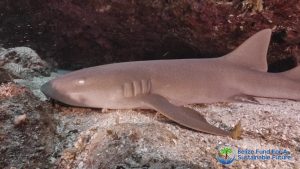 Sharks aren’t just roaming the ocean aimlessly; there’s a purpose for their journey. Their migration helps mix up the gene pool, giving populations a healthy boost in diversity. It also lets them find mates, hunt for food, and stay in tune with changes in their environment. In short, these ocean travelers are following nature’s cues to keep their species thriving.
Sharks aren’t just roaming the ocean aimlessly; there’s a purpose for their journey. Their migration helps mix up the gene pool, giving populations a healthy boost in diversity. It also lets them find mates, hunt for food, and stay in tune with changes in their environment. In short, these ocean travelers are following nature’s cues to keep their species thriving.
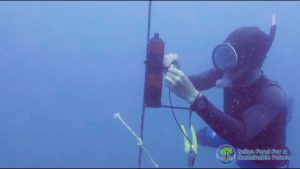 Jessica Quinlan
Jessica Quinlan
“My very first trip to Belize was back in 2017, where I began working with the Belize Fisheries Department to rollout a new protocol or monitoring system to monitor catch landings of the shark fishery. So, alongside the logbooks that fishers are required to submit, we ask them to remove a specific fin from each shark that they landed and from that fin, we were able to determine, we were building a program to determine what species were being landed, how many, and then also calculate what size individuals were being landed.”
It’s Fernando Castellanos’ first time scuba diving in open waters and helping Hector.
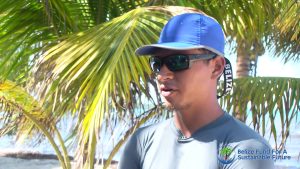
Fernando Castellanos
Fernando Castellanos, Fisherman
“He mi tell we ih had wahn trip fi set out receivers and ih tell we if we interested well let me know. I tell ahn yes, I wahn go fi go get more experience. This is new to me and I love the experience.”
By studying shark populations and migration patterns in the Caribbean Sea and Belize, researchers can inform conservation efforts, promote ecosystem balance, and support sustainable management practices.
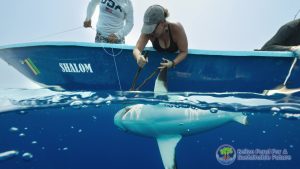 Hector Martinez
Hector Martinez
“We go out and we tag sharks, and Gladden [Spit] is one of the spots that we tagged a bunch of sharks and they are trying to track the movement of sharks within the Mesoamerican Barrier Reef. And so, you tag the shark, you give the shark a little surgery on the body cavity area, put a little acoustic tag in there, sew it back up and you release the shark. And then you set these receivers at different spots. Usually, you set a couple around right where you caught the shark, but then you go and set them at random spots, hoping that the shark will swim by there or another shark that someone else had tagged will swim by there and the receiver will pick up that tag. The tag releases a signal, and the receiver will pick that up and with that we can say, “Oh, this shark was tagged at Gladden and someone got it on their receiver up in Isla Mujeres, so it’s traveling.” And maybe every year it comes at Gladden at this specific time when the snappers are spawning. And so, you can track movement like that.”
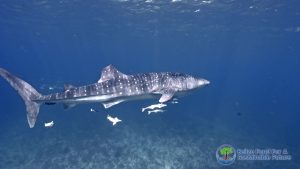 For members of the Belize Shark Fishers Association, tagging sharks is part of a bigger picture; it’s a smart way to earn a living while protecting the ocean. It’s a sustainable alternative that helps them manage fish stocks responsibly, all while playing a key role in marine conservation.
For members of the Belize Shark Fishers Association, tagging sharks is part of a bigger picture; it’s a smart way to earn a living while protecting the ocean. It’s a sustainable alternative that helps them manage fish stocks responsibly, all while playing a key role in marine conservation.
Anderson Martinez
“So all of this BRUVS, I think it’s a very good thing because, you know, I’m a lobster diver, spear fishing, so when you give us jobs like that, it takes [away] a lot of pressure from the lobsters and the fish stocks. So then, it’s a good thing and I do it along with my brothers and my father and so, it brings all of us together.”
Isani Cayetano for News Five.




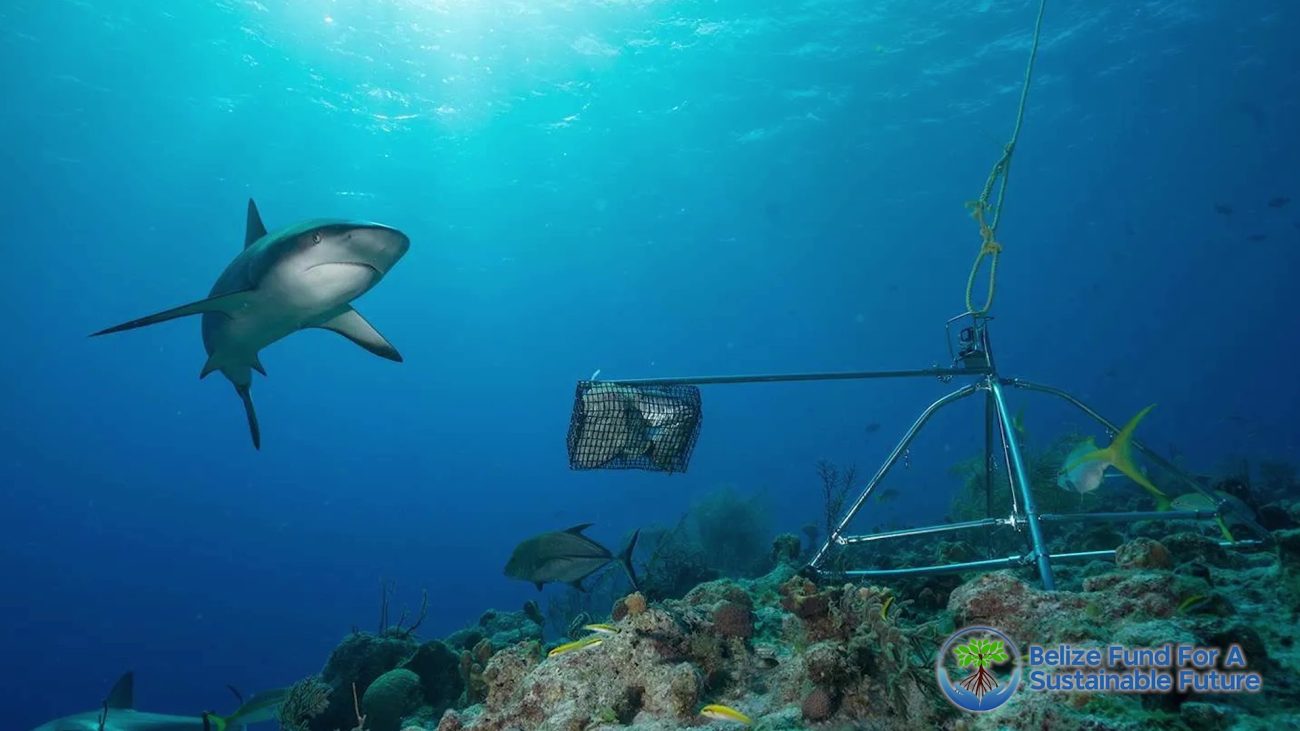
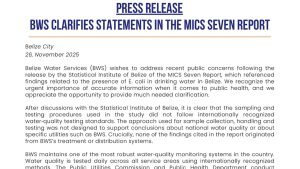
Facebook Comments